High gravity brewing and distilling
- Like
- Digg
- Del
- Tumblr
- VKontakte
- Buffer
- Love This
- Odnoklassniki
- Meneame
- Blogger
- Amazon
- Yahoo Mail
- Gmail
- AOL
- Newsvine
- HackerNews
- Evernote
- MySpace
- Mail.ru
- Viadeo
- Line
- Comments
- Yummly
- SMS
- Viber
- Telegram
- Subscribe
- Skype
- Facebook Messenger
- Kakao
- LiveJournal
- Yammer
- Edgar
- Fintel
- Mix
- Instapaper
- Copy Link
Posted: 6 September 2011 | Graham G. Stewart, GGStewart Associates and the International Centre of Brewing and Distilling, Heriot-Watt University | No comments yet
While the basic processes of malting, brewing and distilling were established long ago, it was in the late 19th century that the key scientific investigations commenced on beer and its production through the pioneering work of scientists such as Pasteur, Hansen, Sorenson, Brown and decades of subsequent research on process engineering, sensor technology, barley and yeast metabolism, hop chemistry and more. Beer brewing represents the quintessential fermentation process in terms of product quality control and efficient use of resources1.
Over the past 30 years, and longer, process optimisation and increased efficiencies have been priorities for many brewing and distilling companies2. Process intensification has become part of this endeavour and has focused on increased rates of fermentation and final attenuation, high quality yeast viability and vitality, decreased maturation (aging) times, more efficient stabilisation and filtration, enhanced beer quality and stability and high gravity brewing and distilling including reduced capital expenditure and a positive impact on process sustainability3.
While the basic processes of malting, brewing and distilling were established long ago, it was in the late 19th century that the key scientific investigations commenced on beer and its production through the pioneering work of scientists such as Pasteur, Hansen, Sorenson, Brown and decades of subsequent research on process engineering, sensor technology, barley and yeast metabolism, hop chemistry and more. Beer brewing represents the quintessential fermentation process in terms of product quality control and efficient use of resources1. Over the past 30 years, and longer, process optimisation and increased efficiencies have been priorities for many brewing and distilling companies2. Process intensification has become part of this endeavour and has focused on increased rates of fermentation and final attenuation, high quality yeast viability and vitality, decreased maturation (aging) times, more efficient stabilisation and filtration, enhanced beer quality and stability and high gravity brewing and distilling including reduced capital expenditure and a positive impact on process sustainability3.
While the basic processes of malting, brewing and distilling were established long ago, it was in the late 19th century that the key scientific investigations commenced on beer and its production through the pioneering work of scientists such as Pasteur, Hansen, Sorenson, Brown and decades of subsequent research on process engineering, sensor technology, barley and yeast metabolism, hop chemistry and more. Beer brewing represents the quintessential fermentation process in terms of product quality control and efficient use of resources1.
Over the past 30 years, and longer, process optimisation and increased efficiencies have been priorities for many brewing and distilling companies2. Process intensification has become part of this endeavour and has focused on increased rates of fermentation and final attenuation, high quality yeast viability and vitality, decreased maturation (aging) times, more efficient stabilisation and filtration, enhanced beer quality and stability and high gravity brewing and distilling including reduced capital expenditure and a positive impact on process sustainability3.
What is high gravity brewing? It is a procedure that employs wort at higher than normal concentration and consequently requires dilution with water (usually specially treated including being deoxygenated) at a later stage in processing. By this means, increased production demands can be met without expanding brewing, fermenting and storage facilities. Also in this green era, as will be discussed later, this process enhances the sustainability of brewing and distilling4.
The advent of high gravity brewing (as distinct from the production of speciality high alcohol beers) was stimulated by the significant volume growth of the brewing industry induced by post-war economic development and prosperity, particularly in North America, during the 1960s and 1970s. Dilution can occur before, during, or after final filtration. Obviously, the later the dilution, the greater the increase in capacity will be and, consequently, the saving in capital expenditure. Critics of high gravity brewing procedures maintain that this technique ‘waters down beer’. This is untrue! The procedure merely changes the point in the process at which water is added. Essentially, the point of water addition is modified from the beginning of the process (during mash-in with the milled malt and other grains) to later, but the same (possibly less) overall volume of water is employed for a standard beer.
Advantages and disadvantages of the process
High gravity techniques in both brewing and distilling are a diverse series of processes and exhibit a number of advantages and disadvantages. Its advantages are diverse. Highly concentrated wort produced from this process can be diluted to produce an array of products with different gravities, bitterness units, residual extracts and colour/sweetness. There can be use of adjuncts (unmalted carbohydrates) and consequently, a reduction in raw material costs due to less use of malt5.
Although widely debated6, there is an improvement in physical and flavour stability and overall quality drinkability. Perhaps the most important aspect is the increase in productivity without significant capital expenditure on existing facilities. Areas that are becoming increasingly important in this era of sustainable development are the amount of water and energy required in a brewhouse per unit of sales gravity beer produced. In addition, high gravity conditions can result in a reduction in labour, cleaning and effluent costs. Lastly, high gravity wort conditions will result in increases in alcohol production per unit of fermentable extract as a result of reduced yeast growth induced by higher osmotic pressure in the wort and consequently more wort sugars being converted to alcohol7. Although the high gravity process has a number of advantages, inevitably there are disadvantages. Due to the more concentrated mash (increased ratio of carbohydrate to water in order to produce high gravity wort), there is a decrease in brewhouse material efficiency. This problem can be overcome by the use of modern mash filters instead of traditional lauter tuns and/or kettle syrups where entry of carbo – hydrate into the process by-passes the process whereby the unboiled wort (sometimes called sweet wort) is separated from the spent grains. In addition, the more concentrated wort during boiling results in decreased hop utilisation. This process disadvantage can be alleviated by the use of kettle and postfermentation hop extracts.
One of the major disadvantages to the high gravity brewing process is reduced foam stability (head retention) in the final diluted beer. The major reason for this is greater loss of hydrophobic polypeptides during the brewing process. This problem can be partially overcome by the use of hop extracts, wheat malt and increased mash sparging with either a lauter tun or a mash filter8.
There are also difficulties in achieving beer flavour match with lower gravity beers. This is particularly due to elevated ester formation (especially ethyl acetate and isoamyl acetate) during the fermentation of high gravity wort. Yeast performance is more profoundly influenced by high gravity worts with specific effects on fermentation, flocculation and yeast generation cycles during biomass re-use. Further, high gravity worts require greater wort dissolved oxygen levels at the beginning of fermentation together with increased yeast pitching (inoculation) concentrations. Finally, as already discussed, a further disadvantage of the process is that specially treated dilution water (low dissolved oxygen, etc.) is required.
A detailed consideration of high gravity brewing is too extensive to discuss in this document and a listing of references can be found later. Consequently, only two specific areas will be considered:
- Effect of yeast proteinase A secretion and wort gravity on beer foam stability
- Influence of high gravity wort (wash) on the production of grain whisky
Effect of yeast proteinase A secretion and wort gravity on beer foam stability
An important indicator of beer quality is its foam characteristics when poured into a glass (people who insist in drinking directly out of a bottle or can do not appreciate what they are missing!). Beers brewed at higher gravities followed by dilution have poorer foam stability when compared beers with similar alcohol levels brewed at lower gravities9. It is known that specific hydrophobic polypeptides (poly – peptides that dislike mixing with water) play an important role in foam formation and foam stability10. Also important compounds in foam formation are isoalpha acids, metal ions and melanoidins11. The level of hydrophobic polypeptides (using a liquid chromatographic assay employing phenyl sepharose11) has been determined throughout the brewing and fermentation of high gravity (20°Plato) and low gravity (10°Plato) worts (1°Plato ≡ 1gram of sucrose dissolved in 100 mL distilled water at 20°C). During brewing, there is a proportionately greater loss of hydrophobic polypeptides with the 20°Plato wort than the 10°Plato counterpart (Figure 1).
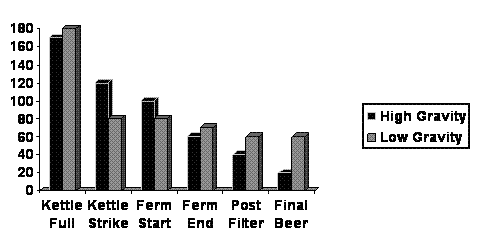

Figure 1 Changes in hydrophobic polypeptide levels during the brewing and fermentation of low (10°Plato) and high (20°Plato) worts. Final beers both diluted to 4.5(v/v) alcohol
When the high gravity fermented beer was diluted to 4.5 per cent alcohol by volume, equivalent to the low gravity beer, it contained a level of hydrophobic polypeptides that was less than 50 per cent of the level produced in the low gravity produced beer (Figure 1).
The head retention of the diluted high gravity brewed beer was less than that of the low gravity brewed beer. This difference was apparent when both beers were poured into 100mL measuring cylinders and the time taken for foam collapse determined. Two minutes after pouring, there was very little foam or cling with the diluted high gravity beer sample, but substantial foam and cling remained on the low gravity beer sample (Figure 2). Four minutes after pouring, differences in the foam stability of the two beer types were even more exacerbated (Figure 3).
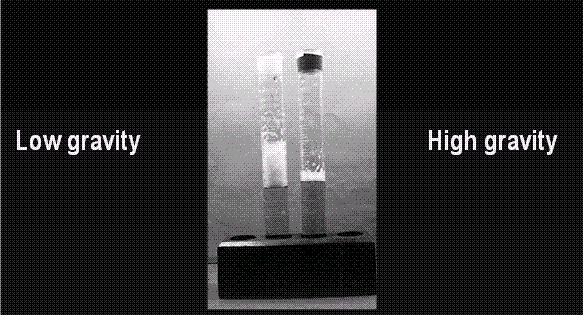

Figure 2 Beer foam collapse characteristics two minutes after pouring – beers produced with low (10°Plato) and high (20°Plato) gravity worts
Figure 1 llustrates that hydrophobic polypeptides are lost from the liquid phase during brewing and fermentation. During brewing, foam-positive hydrophobic polypeptides are lost as a result of protein precipitation (known as hot and cold break formation). Fermentation is a key stage where hydrophobic polypeptides are lost. There are at least two factors that account for this loss. Firstly, losses occur due to fermenter foaming. During wort fermentation, a high gradient of hydrophobic polypeptides towards the surface has been shown12. This enhances adhesion of foam-active compounds to the side of the fermentation vessel during transfer to the maturation (aging) vessel. Secondly, yeast ‘secretes’ proteolytic enzymes into the fermenting wort and these appear to have a negative effect on the foam stability of finished beer due to polypeptide hydrolysis that will occur during fermentation and aging. Proteinase A (PrA) increased throughout fermentation (Figure 4). High amounts of PrA were released during a 20°Plato wort fermentation compared to the 10°Plato wort fermentation which were conducted on the 2hL scale in the brewing pilot plant (Figure 5) of the International Centre for Brewing and Distilling at Heriot-Watt University, Edinburgh, Scotland. During high gravity wort fermentations, increased stress on the yeast, in the form of elevated osmotic pressure and ethanol concentration appears to have stimulated the secretion of PrA into the wort during fermentation13.
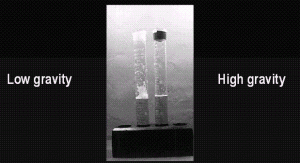

Figure 3 Beer foam collapse characteristics four minutes after pouring – beers produced with low (10°Plato) and high (20°Plato) gravity worts
Influence of high gravity wort (wash) on the production of grain whisky
Scotch whisky has been defined in United Kingdom law since 1909. The current definition is contained in the Scotch Whisky Act 1988, which states: Scotch Whisky means whisky which has been produced in a distillery in Scotland from water and malted barley to which only whole grains of other cereals (for example, maize and wheat) may be added. The Scotch Whisky Act 1988 prohibits the production in Scotland of whisky other than Scotch. The Scotch Whisky Act 1988 and the accompanying European Union legislation both specify a minimum sales alcoholic strength of 40 per cent by volume14.


Figure 4 The effect of wort gravity on proteinase A release during fermentation of low (12°Plato) and high (20°Plato) gravity worts
There are two distinct types of whisky, malt and grain, each of which has different characteristics. It is beyond the scope of this article to discuss in any detail the characteristics of either type. Suffice to say that malt whisky is produced from 100 per cent barley malt in a batch process whereas grain whisky is produced by both batch and continuous fermentation processes. A schematic of continuous fermentation is shown in Figure 6.
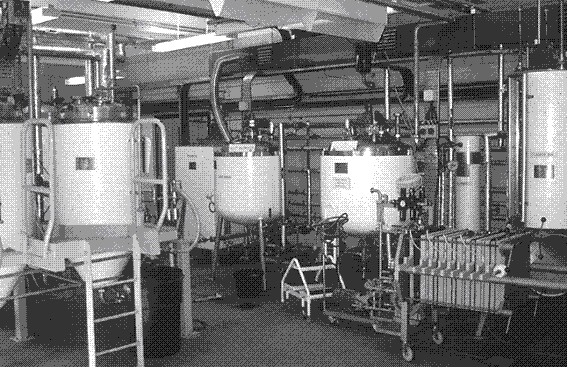

Figure 5 The 2hL brewing pilot plant in the International Centre of Brewing and Distilling in Heriot-Watt University, Edinburgh, Scotland
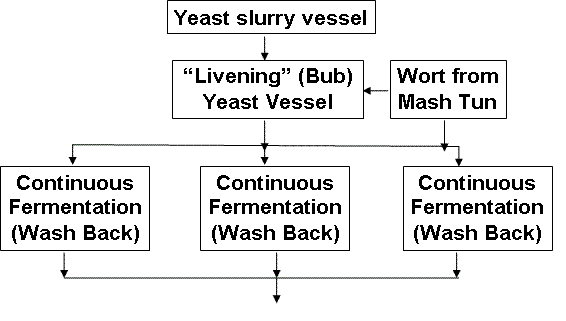

Figure 6 Schematic of a fermentation process used for grain whisky production
In 2005, a grain distillery in Scotland employing continuous fermentation (there are seven grain distilleries currently operating in Scotland – two employing continuous fermentation) was successfully fermenting 21°Plato wort yielding 11 per cent(v/v) alcohol in the fully fermented wort. This situation prevailed early in 2006 but late in 2006 problems began to be encountered with a decreasing yield of alcohol to 9.6 (v/v) alcohol due to incomplete utilisation of maltose and particularly maltotriose (Figure 7). This equated to a reduced alcohol yield from 385L alcohol/tonne of grain to 370L alcohol/tonne of grain. In addition, because of the residual unfermented wort maltose and maltotriose, the residue in the still following distillation [called the distillers dried grain (DDS)] possessed a sticky consistency and was not acceptable to use as an animal feed. In an attempt to overcome this problem, the original gravity of the wort was reduced to 19°Plato (Table 1). This resulted in complete fermentation of the wort with no residual maltose and maltotriose and improved consistency of the DDS. However, the distillery’s overall alcohol yield was reduced below budgeted productivity levels. The precise reasons for the deterioration in yeast efficiency regarding maltose and maltotriose uptake in 2005 are still unclear but the direct effect of the high gravity wort (probably a combination of osmotic pressure and alcohol) cannot be discounted. The exact reasons for this inhibition are unclear but the fact that both these sugars require energy (active transport) to be taken into the cell must be relevant15,16.
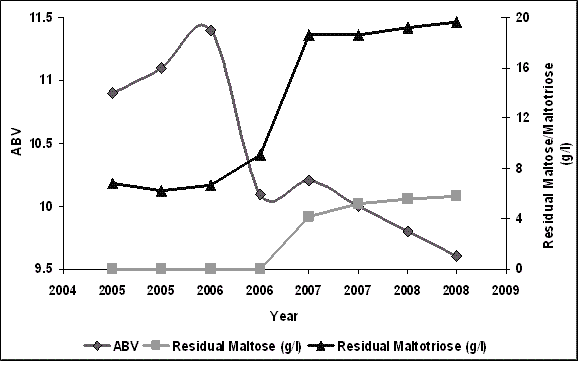

Figure 7 Fermentation trends with a 21°Plato grain wort from July 2005 to September 2008
Table 1. Fermentation characteristics of 19°Plato and 21°Plato grain worts processed during 2008.
|
Wort |
Alcohol (%vol/vol) |
Residual Maltose (g/L) |
Residual Maltose (g/L) |
| 21°Pn |
9.6 |
5.8 |
10.6 |
| 19°P |
10.2 |
4.3 |
6.5 |
Conclusion
High gravity brewing and distilling employs wort (15-22°Plato original gravity) at higher than normal (10-12.5°Plato original gravity) and to obtain sales gravity beer requires dilution with water (usually carbon filtered and deoxygenated) at a later stage in processing. By this means, increased production demands can be met without significant expansion of brewing, fermenting and storage facilities. In addition, areas that are becoming increasingly important in this era of sustainable development are the amount of water and energy required in a brewhouse per unit of sales gravity beer produced where high gravity production has considerable advantages.
References
1. Bamforth, C. and G. Stewart (2010). “Brewing – the transformation of a craft into a technology.” The Biologist 57: 138-147
2. Stewart, G. and J. Murray (2010). “A selective history of high-gravity and high-alcohol beers.” Master Brewers Association of the Americas, Technical Quarterly 47: 2- 0416-01
3. Stewart, G.G. (2010). “High gravity brewing and distilling – Past experiences and future prospects.” Journal of the American Society of Brewing Chemists 68: 1-9
4. Stewart, G.G. and J. Murray (2011). “Using brewing science to make beer great.” Master Brewers Association of the Americas, Technical Quarterly 48: 13-19
5. Stewart, G.G., T. Yonesawa and S.A. Martin (2007). “Influence of mashing conditions on fermentation characteristics of all-malt wort used to produce beer or whisky.” Master Brewers Association of the Americas, Technical Quarterly 44: 256-263
6. Murray, C.R. and G.G. Stewart (1991). “Experience with high gravity lager brewing”. Birra et Malto 44: 52-64
7. Stewart, G.G. (2000). “A brewer’s delight.” Chemistry and Industry pp. 706-709.
8. Andrews, J.M.H., J.C. Hancock, J. Ludford-Brooks, I.J. Musfin, L. Houldsworth and M. Phillips (2011). “125th anniversary review: some recent engineering advances in brewing and distilling”. Journal of the Institute of Brewing 117: 23–32
9. Cooper, D.J., G.G. Stewart and J.H. Bryce (1998). “Some reasons why high gravity brewing has a negative effect on head retention.” Journal of the Institute of Brewing 104: 221–228
10. Cooper, D.J., G.G. Stewart and J.H. Bryce (1998). “Some reasons why high gravity brewing has a negative effect on head retention.” Journal of the Institute of Brewing 104: 221–228
11. Bamforth, C.W. (1995) “Foam: method, myth or magic?” The Brewer 81: 396-399
12. Bryce, J.H., D. Cooper, and G.G. Stewart (1997). “High gravity brewing and its negative effect on head retention.” Proceedings of the 26th Congress of the European Brewery Convention, Maastricht, The Netherlands pp. 357-365
13. Brey, S.E., J.H. Bryce and G.G. Stewart (2002) “The loss of hydrophobic polypeptides during fermentation and conditioning of high gravity and low gravity brewed beer.” Journal of the Institute of Brewing 108: 424-433
14. Gray, A.S. (2008). The Scotch Whisky Industry Review, 31st edition edited by Sutherlands, Edinburgh, Scotland
15. D’Amore, T., I. Russell and G.G. Stewart (1989) “Sugar utilization by yeast during fermentation”. Journal of Industrial Microbiology 4:315-324
16. Zheng, X., T. D’Amore, I. Russell and G.G. Stewart (1994) “Factors influencing maltotriose utilization during brewery wort fermentation”. Journal of the American Society of Brewing Chemists 52: 41-47
Graham Stewart is Emeritus Professor in Brewing and Distilling, Heriot-Watt University and Special Professor, Bioethanol Fermen tation, Nottingham University. He was Director and Professor of the International Centre for Brewing and Distilling, Heriot-Watt University, 1994-2007. He received BSc Hons, Microbiology and BSc Hons Biochemistry from the University of Wales, and PhD and DSc degrees from Bath University. He was Lecturer in Biochemistry in the School of Pharmacy, Portsmouth College of Technology, 1967-1969. 1969-1994 he held various technical positions with Labatt’s in Canada, being Brewing Technical Director 1986-1994. He was President of the Institute of Brewing in 1999 and 2000. He is a member of the American Society of Brewing Chemists and the Master Brewers Association of the Americas. He holds fellowships in the IBD, the Institute of Biology and the American Academy of Microbiology. He has over 260 publications to his name. He has established a consulting company, GGStewart Associates, in Cardiff, Wales. He was awarded the Horace Brown Medal of the IBD in 2009; Award of Distinction of the ASBC in 2008; Presidential Award of the MBAA in 1983 and 1998 and its Award of Merit in 2009 and the Charles Thom Award of the Society of Industrial Microbiology in 1988.
email: [email protected]



